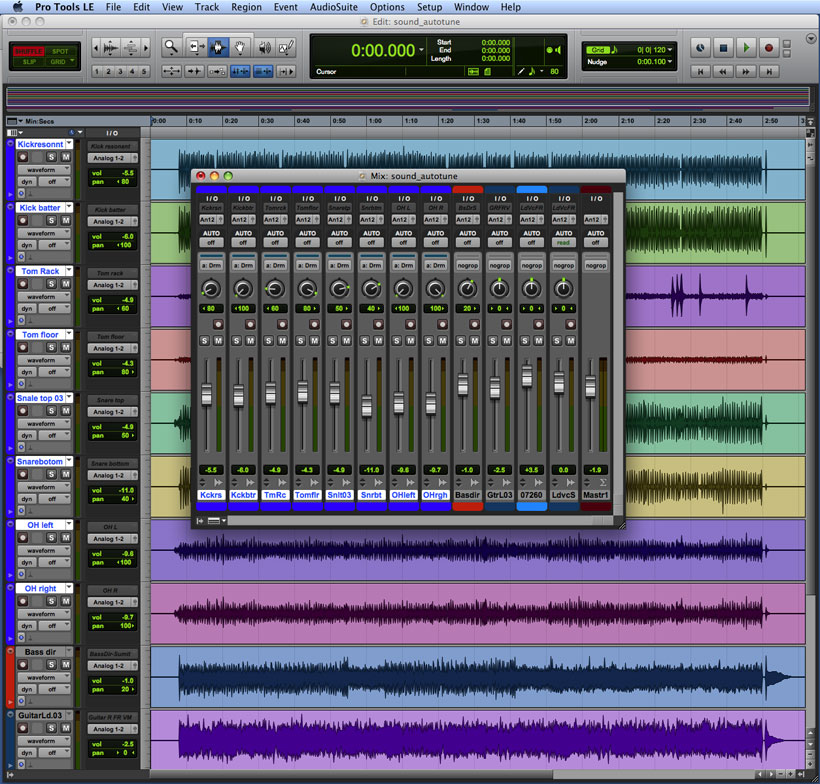

HANDS-ON 1.MIDI editing is greatly improved, as evidenced by the controller lanes. 2.Pro Tools doesn’t support MIDI plug-ins per se, but the MIDI Realtime Properties options work in a similar way.
3.Yes, you’re seeing 10 inserts. What you’re not seeing are the 16 extra tracks the LE version now includes: 48 instead of the 36 in PT7. 4.The Universe view simplifies navigation with a compact, quick-scrollable overview of your project. 5.Twenty new effects include this “Talkbox,” which imparts vowel-like sounds to an audio signal. 6.Comping audio tracks is easier than it’s ever been in Pro Tools.
7.The interface has a darker, more pro look that’ll be particularly welcome in video editing suites. PROS Greatly improved MIDI capabilities. Excellent Score Editor. Many significant workflow improvements. New virtual instruments rock. More tracks (48) and inserts (10) than previous versions of LE or M-Powered.
Improved look and feel. Hawaii Drivers License Road Test Tips on this page. Elastic Audio pitch transposition. CONS Retains several “legacy” limitations: No automatic path delay compensation for plug-ins, no track freeze, no support for VST devices, no faster-than-realtime bouncing. INFO Upgrade for LE or M-Powered: $149.95; HD upgrade: $249.95; M-Powered new install: $249.95, NEED TO KNOW What is it? The latest version of Pro Tools, the industry-standard DAW in commercial studios. Is the upgrade worth the money? The new virtual instruments alone are worth the price, but add the score notation, greatly improved MIDI, 20 new effects, better workflow, and Elastic Pitch, and it’s a no-brainer.
Do not connect your 003 family interface to your computer until you've installed Pro Tools from your installer DVD as described in. Welcome to Pro Tools LE 8. 4 Click an item (track) to select a song on. Pro Tools Creative Collection suite of plug-ins that comes free with Pro Tools. Our Secret Universe The Hidden Life Of The Cell Downloads. It's installed au- tomatically during the.
Does PT take advantage of 64-bit operating systems? At press time, support for Mac Snow Leopard and Windows 7 were “coming soon,” but we don’t yet know whether it’ll run 64-bit natively, or as a 32-bit app, as it now does under 64-bit Vista. Can the Score Editor replace my notation program? For pro-level work such as printing a big orchestral project, you’ll still need Sibelius or an equivalent program. But the Score Editor is based on the Sibelius engine, so not only is it really good, but you can export files to Sibelius. Does Elastic Pitch replace programs like AutoTune or Melodyne? Elastic Pitch affects regions, not individual notes.
For really detailed pitch editing, you’ll want more. But if you only need to transpose an instrument, no problem.
How are the new virtual instruments? They sound great and they’re super fun to use — to get right to them. WHAT’S NEW The most obvious changes are the five new virtual instruments (see page 54), 20 new effects, greatly improved MIDI editing, and the Score Editor. There’s also a new look and new session templates, improved comping, a decent pitch-transposition algorithm, and the LE/M-Powered track count has been upped to 48 mono or stereo tracks. Some previously optional effect plug-ins are now included: Eleven Free, Maxim, D-Fi, and Bomb Factory’s SansAmp. There are too many other small tweaks to go into here, but we’ll hit the high points. There have also been enhancements to the optional Music Production Toolkit.